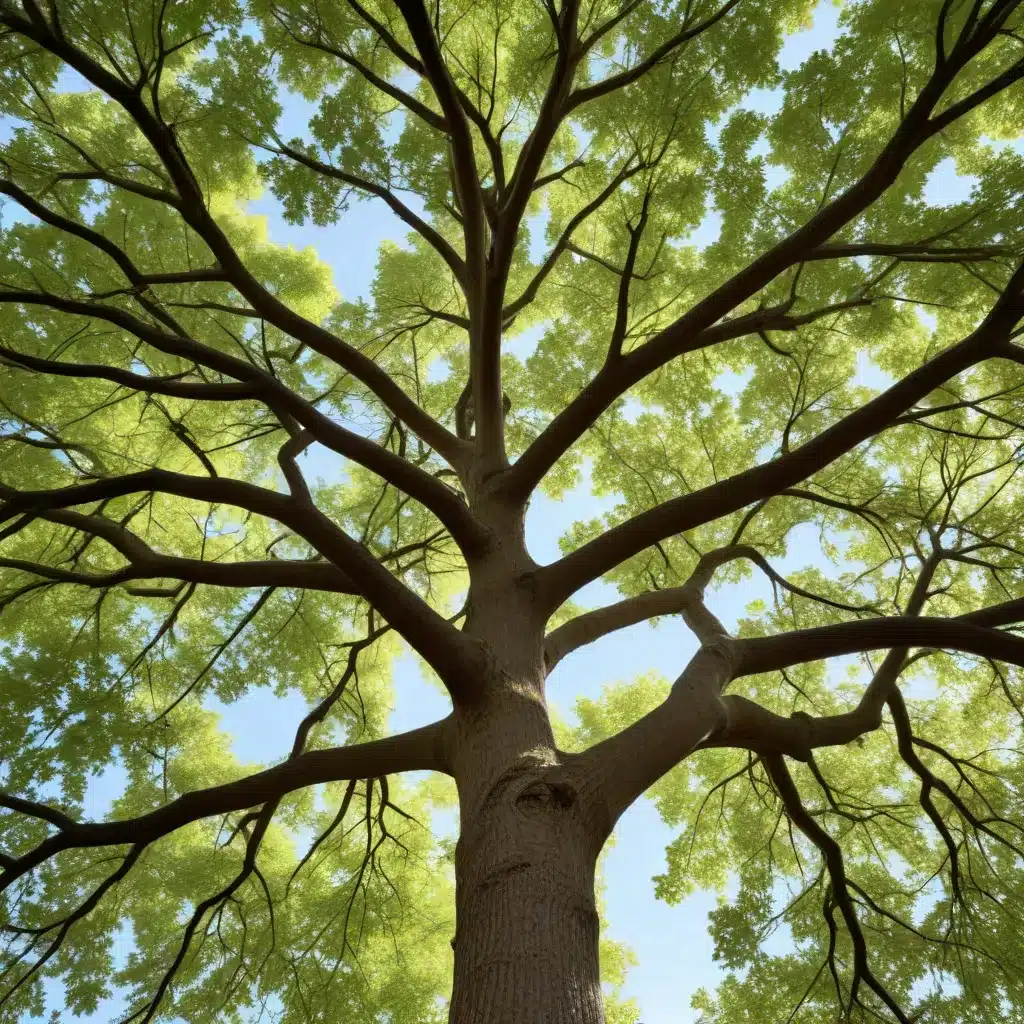
‘The Intersection of Tree Care and Climate Change: Adapting to a Warming World’
As the climate continues to shift, tree care professionals at TriCounty Tree Care must adapt their practices to safeguard the health and resilience of urban forests. By thoughtfully selecting drought-tolerant tree species, managing invasive pests, and implementing strategic reforestation initiatives, we can cultivate landscapes that thrive in the face of rising temperatures and precipitation volatility. Ultimately, this multifaceted approach empowers communities to harness the carbon sequestration and microclimate regulation benefits of trees, fortifying their collective resilience.
Tree Care Strategies for a Changing Climate
Drought-Tolerant Landscaping
The escalating frequency and intensity of droughts demand a shift in tree species selection. TriCounty’s arborists recommend prioritizing native, xerophytic (drought-adapted) tree varieties that can withstand extended periods of water scarcity. For example, the drought-resistant Quercus virginiana (Live Oak) and Acer rubrum (Red Maple) excel in our region’s shifting climate patterns. By favoring these resilient species, we can establish urban forests capable of self-sustaining with minimal irrigation.
Invasive Species Management
Alongside shifting precipitation regimes, the proliferation of invasive pests poses a grave threat to the health and longevity of our local tree canopy. TriCounty’s arborists vigilantly monitor for the arrival of destructive non-native insects and pathogens, such as the Emerald Ash Borer and Sudden Oak Death. Through proactive integrated pest management (IPM) strategies, we can mitigate the spread of these invasive organisms, safeguarding the ecological integrity of our urban forests.
Reforestation Initiatives
To offset the compounding impacts of climate change, TriCounty Tree Care actively collaborates with municipal authorities and community organizations to spearhead large-scale reforestation projects. By strategically planting diverse, climate-resilient tree species, we can not only restore dwindling urban canopies, but also cultivate biodiversity and enhance carbon sequestration capabilities. These initiatives empower local communities to take tangible action against the threats posed by a warming world.
Climate Change Impacts on Urban Forests
Temperature Increases
As global temperatures continue to rise, the trees within our local landscapes face increasing physiological stress. Prolonged exposure to heat waves and urban heat island effects can lead to reduced growth, premature senescence, and even tree mortality. TriCounty’s arborists closely monitor these trends, proactively addressing the challenges posed by a hotter climate through strategic species selection and proactive maintenance practices.
Precipitation Changes
Erratic precipitation patterns, marked by both prolonged droughts and intense, flash flooding events, pose significant threats to the health and stability of urban trees. Severe drought can compromise a tree’s ability to acquire vital water and nutrient resources, while excessive rainfall can lead to waterlogged soils and increased susceptibility to root diseases. TriCounty’s team of experts remains vigilant, adjusting irrigation schedules and employing soil amelioration techniques to safeguard the longevity of our urban forests.
Extreme Weather Events
The intensification of extreme weather events, such as hurricanes, ice storms, and high-wind episodes, jeopardizes the structural integrity of urban trees, increasing the risk of branch failure and uprooting. TriCounty’s emergency response crews are poised to swiftly address these climate-driven incidents, ensuring the safety of local residents and the continued vitality of our tree canopy.
Ecosystem Adaptation Strategies
Urban Forest Management
To bolster the resilience of our urban forests, TriCounty Tree Care collaborates with municipal authorities and community stakeholders to develop comprehensive urban forest management plans. These strategic initiatives leverage species diversity, age-class distribution, and strategic planting locations to create self-sustaining, climate-adapted tree populations capable of withstanding the challenges posed by a changing climate.
Reforestation Initiatives
In addition to our urban forest management efforts, TriCounty Tree Care actively spearheads large-scale reforestation projects within our local communities. By strategically planting diverse, drought-tolerant and pest-resistant tree species, we can not only restore dwindling urban canopies, but also enhance carbon sequestration capabilities and foster biodiversity – key components of a thriving, climate-resilient ecosystem.
Biodiversity Conservation
Recognizing the critical role of biodiversity in sustaining healthy, adaptive urban forests, TriCounty Tree Care prioritizes the conservation of native tree species and their associated ecological communities. Through strategic planting initiatives and collaborative efforts with local environmental organizations, we work to safeguard the intricate web of life that underpins the long-term viability of our urban tree canopies.
Intersections and Considerations
Carbon Sequestration
As global temperatures rise, the importance of urban trees’ carbon sequestration capabilities cannot be overstated. TriCounty’s arborists leverage their expertise to maximize the greenhouse gas mitigation potential of our local tree populations, strategically selecting and maintaining species known for their robust carbon storage capacities. This, in turn, contributes to the overall climate resilience of our communities.
Microclimate Regulation
In addition to their carbon sequestration benefits, urban trees play a vital role in moderating local microclimates, providing critical cooling and shading that can offset the impacts of rising temperatures and urban heat island effects. TriCounty’s team of experts carefully considers the microclimate regulation capabilities of different tree species when developing our urban forest management plans, ensuring that our landscapes can effectively mitigate the physiological stresses imposed by a changing climate.
Community Resilience
Ultimately, TriCounty Tree Care’s holistic approach to tree care and climate adaptation is driven by a deep commitment to fostering community resilience. By safeguarding the health and longevity of our urban forests, we empower local residents to withstand the mounting challenges posed by a warming world, from improved air quality and reduced energy costs to enhanced mental well-being and strengthened social cohesion. As we navigate the uncharted waters of climate change, TriCounty Tree Care remains steadfast in our mission to cultivate vibrant, resilient communities through the power of trees.
For more information on TriCounty Tree Care’s climate adaptation strategies and services, please visit www.tricountytreecare.com.


